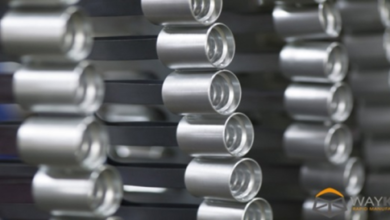What is a Forklift | Benefits of Forklifts

What is a Forklift?
Forklifts have become a significant vehicle in constructing and warehousing. Forklifts’ hydraulics can either be operated manually or through electrically controlled levers.
A Forklift truck is used for carrying and hoisting numerous construction materials and heavy loads quickly using a forked platform inserted at the front. Forklifts are designed just because of to reduce the workload of construction workers and prevent them from body strain through heavy lifting.
Forklifts Load Capacity
Forklifts have become a major part of industries and construction sites for transportation and lifting of various sizes of loads. Forklifts are of several kinds with different controls and various load capacities. In most construction sites, forklifts’ load capacities reside between 2000 pounds to 100,000 pounds.
You can find the load capacity of a forklift on its nameplate and the load must not exceed this limit in order to avoid toppling over. The maximum load capacity of a forklift depends on three things i.e. load capacity, rated capacity, and net capacity at a particular load center.
Read Also: Spectrum Antivirus Review
Buying/Renting Forklifts
Another question that many people ask is “Can I rent a forklift for my needs or have to buy one? The answer is yes, you can rent a forklift easily by contacting some facility that rent, sell, and buy forklifts.
You can find these forklifts buy/renting companies near you. If you are living in the UK then you should give a try Alternate Technologies UK. They are experts in material handling and you will get every answer to your queries from them.
Types of Forklifts
Warehouse of Forklift
Warehouse Forklifts are the classic and most serviceable forklifts in warehouses and industrial settings. So, they are likely to be found in most of the factories, industries, construction sites, and warehouses as they work best in indoor locations.
Warehouse Forklift can be characterized as par to their load center, weight capacity, and stability.
Warehouse Forklift is used for loading and unloading stock from delivery vehicles and carrying construction material and factory supplies from one location to another. It saves a lot of time and requires less manpower which reduces the expenses. Furthermore, the key feature of a warehouse forklift is that it can lift one to five tons of weight which makes them very convenient.
The warehouse Forklifts can further be classified in the following categories based on their design, structure, and use.
Side loader
Side Loaders that are also known as side lifters are mostly utilized for movement in narrow aisles and passages without having to turn because of their small and compact structure. These loaders have a small compartment in the side for the driver and a platform that moves along the racks.
They are used for lifting and moving supplies and stock which are long in length such as pipes, wood, etc.
Counterbalance Forklift
The counterbalance forklifts are named after their balancing ability. The front portion of the truck is use for loading and unloading stocks from the shelf. While the back part is use to carry heavy loads that help the vehicle in maintaining its balance.
The purpose of designing a counterbalance forklift that it can move directly to the load. Moreover, the adaptation of counterbalance forklift in 3-wheel form makes circular navigability possible. The stand-up variant allows occasional movement between loads and inventory supplies.
Benefits of Using Forklifts in Business Environment
It is safe to say that forklifts are the most hardworking piece of equipment in every industrial work environment. They almost cut half of the cost that is spent on labor, and time spent on each project which increases revenue and the growth of your business. Forklifts assist your labor to move supplies and materials used in your project from place to place with efficiency and less time.
Forklifts have evolved in the past few years and have become more versatile, efficient, and affordable. They are not the same manually controlled forklifts, but now they are electrically powered, reliable, and self-sufficient. These electric forklifts consume less diesel and are safe to use.
Some of the major benefits that any business owner can achieve by adding forklifts in their work environment are.
Safe
Forklifts have become more safe and easy to use in the past few years. Because workers are taking training in a modern work environment to work alongside forklifts to make the delivery and stocking of goods a less hectic task.
Modern forklifts are designed in such a way that they have become safer than ever before. These new, improved, and functional forklifts ensure the safety of your labor and prevent any mishaps or deaths happening on your business sites.
Less Time Consumption
These evolved forklifts save time and carry heavy loads and containers over short distances in minimum time with less effort on the workers’ part. Being a business owner, it’s very important to spend less time on every project. While still maintaining the highest quality in your work to gain more profit and revenue in the market. Forklifts allow dependability.
Affordable
Due to the more and more use of forklift trucks, forklift manufacturers have increased the supply of forklifts in the market. Now even small businesses can afford one or more forklifts for assistance. So, it’s high time to start a construction business and storage facility with a few investments in good electric forklifts as the usage of forklifts reduces the labor expenditures on every single delivery.
Efficient
Forklifts are more efficient and versatile than any labor. From the long list of the variety of forklifts. You can choose a suitable forklift that is appropriate for your business.
Whether you want to load and unload supplies from a recent delivery or to take out the needed supplies from the highest shelf even in a narrow aisle. A forklift will perform the task for you with minimal effort.
Maneuverable
A forklift’s Maneuverability depends on its size and structure. Forklifts allow the safe and sound maneuverability of heavy loads and deliveries over short as well as long distances. They are movable even in the narrow and circular passages and lanes. This movement specialty makes them the most coherent and flexible machinery in any facility.





